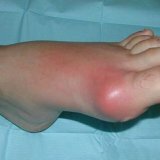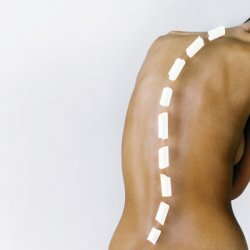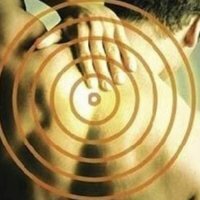How to treat cones on legs

The appearance of cones on the legs is manifested in the form of deformations at the base of the big toe. This is the result of the deviation of the thumb of the foot outward. And the stronger the first finger deviates towards the rest, the deformation becomes stronger. As a result, cones progress, become painful, limit movement in the metatarsophalangeal joints. Hallux valgus or hallux abducto valgus( hereinafter HAV) is the deviation of the thumb from the outside or the deviation of the metatarsal bone of the first finger inside. Most often, the deviation of the finger and metatarsal bone proceeds simultaneously.
Usually HAV is simply called a bump on the leg. Also for its designation the term Bunion ( Latin extension or spreading) is used.
Symptoms of cones on legs.
The formation of the cone begins with the gradual deviation of the first finger outwards. As a result, the bone appears from the inner edge of the foot near the base of the first finger. At this stage, the bone on the foot is usually painless. Over time, the deviation of the thumb will increase, the lump becomes painful. Perhaps the manifestation of redness, swelling, pain in the joints or near them. The pain is usually due to pressing the shoes on the bone or because of arthritis, the pressure may be present inside the joint. Movements in the joints become painful and limited. Cones on the legs are often accompanied by deformation of the second finger. If a person wears closed shoes, the second fingers form callouses. Corns also form and because of the pressure of the first finger on the rest and down to the little fingers. If the pressure falls on the toe, the nail grows into the body.
Reasons for the formation of cones on the legs.
The root cause of cone formation on the leg, finger deflection, usually becomes narrow stiff shoes. This explains the more frequent prevalence of cones on the legs in women choosing an uncomfortable high-heeled model shoes. However, the conducted researches show that among the nationalities, in which wearing of shoes is not accepted at all, there is also a disease typical for the development of cones on the legs. Consequently, in addition to shoes, there are other factors that cause the onset of this disease. In this case, footwear remains the root cause of such a disease. It is widely believed that cones appear as a result of an imbalance of forces acting on the forefoot when walking. The result of an imbalance is disruption of movement and increased pressure on the front joints. This imbalance, combined with unsuitable footwear with age, leads to the deviation of the first finger.
Predisposition to foot deformity is often inherited from parents. Inherited, mainly, a weak ligamentous apparatus. This leads to instability along the periphery of the first joint. The result is the development of cones on the legs. Shoes are also very helpful for their education. Other factors characterizing the appearance of cones on the legs are various traumas, neuromuscular disorders, flat feet, elevated pronation of the foot. Among the unfavorable factors are some activities( ballet), which exert increased pressure on the forefoot.
Treatment.
So how to treat lumps on legs when they arise? The type of treatment of the cones on the leg depends on the degree of the cone's gravity and its type, and also on the causes of its manifestation. There are surgical treatment of cones on the legs and traditional treatment. How effectively the development of cones on the leg will progress and its soreness is largely dependent on how correctly the wearable shoes are picked up. The goal of the treatment is to relieve pressure on the foot bone, as well as to eliminate other unfavorable factors. However, despite everything, the only way to get rid of the cones on the leg is surgical treatment. But without looking at it, a person can take a number of ways and measures to slow the progressiveness of the disease and weaken the growth of the cone on the leg.
Treat cones on legs with the help of independent traditional methods.
- Application to a painful site of tissues that reduce pressure on the affected area of the foot( for example, felt).
- Physiotherapy. This allows you to reduce symptoms, improve the ability to move joints. In general, developing movements in the metatarsophalangeal joint greatly helps.
- Getting rid of calligiousness and any abrasions on the legs, preventing their further appearance.
- Wearing physiological shoes, selected based on medical recommendations and preventing the deviation of the first toe.
- Footwear in case of a deviation of the first toe and bone formation should be soft and elastic, stretched well, maximally stretched in the cape of the shoe to relieve pressure on the foot bone.
- It is necessary to use individual special orthopedic insoles for the disease. They help to correctly distribute the load on the feet when running or walking. They can benefit greatly if there are other symptoms in their feet, because their use with a prominent cone on the leg or with a curved finger is rather controversial. Despite this, many patients talk about the significant benefits of orthopedic insoles, and observed improvements. Orthopedic insoles can benefit very much by slowing the progression of cones on the legs and preventing relapses after surgical correction.
- Physical exercises, medically and individually selected, are also capable of producing undeniable benefits. They allow you to maximize the mobility of joints. This is most important for arthritis-type pains that occur inside the joints, and also for the prevention of such painful symptoms in the future.



